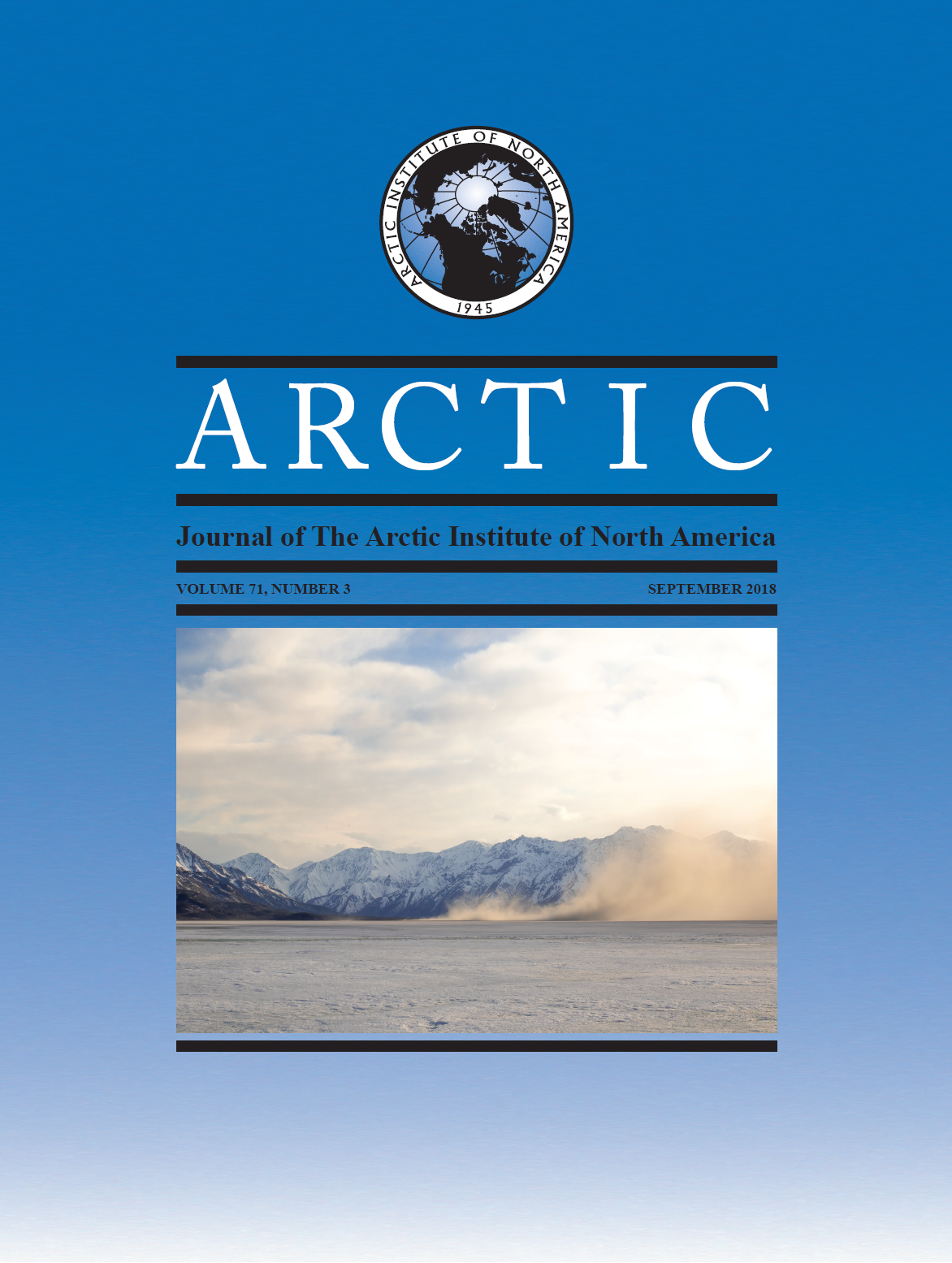The Trans-Alaska Pipeline System Facilitates Shrub Establishment in Northern Alaska
DOI:
https://doi.org/10.14430/arctic4729Keywords:
shrub expansion, Arctic change, tundra, Trans-Alaska Pipeline System, permafrost, disturbanceAbstract
The Arctic tundra is undergoing many environmental changes in addition to increasing temperatures: these changes include permafrost degradation and increased shrubification. Disturbances related to infrastructure can also lead to similar environmental changes. The Trans-Alaska Pipeline System (TAPS) is an example of infrastructure that has made a major imprint on the Alaskan landscape. This paper assesses changes in shrub presence along the northernmost 255 km of the TAPS. We used historical satellite imagery from before construction of the TAPS in 1974 and contemporary satellite imagery from 2010 to 2016 to examine changes in shrub presence over time. We found a 51.8% increase in shrub presence adjacent to the pipeline compared to 2.6% in control areas. Additionally, shrub presence has increased significantly more in areas where the pipeline is buried, indicating that the disturbances linked to pipeline burial have likely created favorable conditions for shrub colonization. These results are important for predicting potential responses of tundra vegetation to disturbance, which will be crucial to forecasting the future of Arctic tundra vegetation.


